Wellness Talk
 This page is generously sponsored by Golden Horses Health Sanctuary
This page is generously sponsored by Golden Horses Health Sanctuary
Topic of the week:Non – alcoholic Fatty Liver Disease (NAFLD)
What is liver?
Liver is located at the right upper abdomen. It is the 2nd largest organ in your body and is
shaped like a football that is flat on one side. It is estimated that liver performs over 500
functions in your body. About 60% of the liver is made up of liver cells called hepatocytes
which absorb nutrients, detoxify and remove harmful substances from the blood.
What is fatty liver?
Non-alcoholic fatty liver disease (NAFLD) is the build up of extra fat in liver cells that is not
caused by alcohol. It is normal for the liver to contain some fat. However, when fat exceeds
10% of the liver weight, the fat cells can damage liver cells. Fatty liver is reversible if detected
at early stage, and it will progress to liver fibrosis and liver cirrhosis.
Stage 1 : Fatty liver or steatosis (> 5% – 10% percent of the liver’s weight is fat).
Stage 2 : Liver fibrosis or Non-Alcoholic Steatohepatitis, NASH (fatty deposit build up in your
liver, causes inflammation and scarring.
Stage 3 : Liver cirrhosis (scarring of the liver — hard scar tissue replaces soft healthy tissue).
Symptoms of fatty liver
Fatty liver often has no symptoms, but when symptoms occur they may include:
What causes fatty liver?
How to detect fatty liver?
- Blood tests show high levels of liver enzymes.
AST (aspartate aminotransferase) or SGOT, can also be elevated in heart and muscle diseases and is not liver specific.
ALT (alanine aminotransferase) or SGPT, is more specific for liver damage.
ALP (alkaline phosphatase) is elevated in many types of liver disease, but also in non-liver related diseases.
GGT (gamma glutamyl transpeptidase) is often elevated in those who use alcohol or other liver-toxic substances to excess.
- Ultrasound of liver
Check your liver health
Eating Disorders- Anorexia Nervosa and Bulimia Nervosa
An eating disorder is an illness that causes serious disturbances to your everyday diet, such as eating extremely small amounts of food or severely overeating. Someone with an eating disorder can appear very thin, healthy weighted or above healthy weight. It frequently appears during the teen years or young adulthood but may also develop during childhood or later in life. Eating disorders can become life-threatening if a person does not receive treatment.
Anorexia nervosa is an eating disorder that makes people lose more weight than is considered healthy for their age and height. People with this disorder may have an intense fear of weight gain, even when they are underweight.
Bulimia nervosa is an eating disorder in which a person binges and purges. The person may eat a lot of food at once and then try to get rid of the food by vomiting, using laxatives, or sometimes overexercising.
Anorexia Nervosa vs. Bulimia Nervosa
Prevalence in Malaysia
- In Malaysia, there is no any concrete studies/ systematic research on the prevalence of eating disorders.
- Estimated figure is 1% of the population having anorexia nervosa, 3% having bulimia nervosa.
- For every 10-20 females with eating disorders, there would be one male with similar problem.
- Anorexia nervosa usually occurs in early adolescence, about 14 years old. Bulimia nervosa happens slightly later but still within the young adult population.
Possible Causes and Risk Factors
Being female
Teenage girls and young women are more likely than are teenage boys and young men to have eating disorders.
Age
Eating disorders are more common during the teens and early 20s compared with lesser cases at other life stages.
Family history
Eating disorders more likely to occur in people who have parents or siblings with history of an eating disorder.
Emotional disorders
People with depression, obsessive-compulsive disorder, anxiety disorders, and/or had any transitions that cause emotional distress (joined college, new job or a relationship breakup) may have eating disorders.
Dieting
Eating disorders may occur in people who take up dieting to improve their appearance.
Eating disorders may occur in people whose job/activities favors a slim
body
Work – athletes, actors, television personalities, dancers, models. Sports –ballerinas, gymnasts, runners and wrestlers.
Society
Peer pressure and media influence may fuel the desire to be thin, particularly among young girls. Western cultural environment often cultivates a desire for thinness.
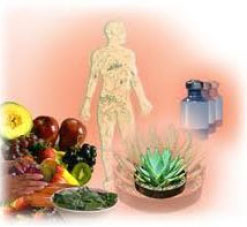 Treatments and Recovery
Treatments and Recovery
If you suspect yourself or someone else having eating disorder(s), get it treated immediately before
it’s too late. You may see both a medical doctor and a mental health doctor for a diagnosis. They may
do various assessments such as physical exams, laboratory tests (blood and urine) and psychological
(mental health) evaluations to pinpoint a diagnosis.
Medical treatment and drugs
- Psychotherapy is an education which helps to develop healthy habits, problem–solving skills, stress handling skills. It also helps to improve relationships and mood. Family-based therapy may also be considered.
- Nutrition educations in which dietitians can help you achieve a healthy weight and instill normal-eating habits.
- Medication which may helps to control urges to binge or purge or to manage excessive preoccupations with food and diet. Antidepressants and anti-anxiety medications may also help with symptoms of depression or anxiety.
Lifestyle and home remedies
- Practicing proper self-care during and after treatment as per doctor’s advice is crucial to maintain overall health.
- Appropriate vitamin and mineral supplements is essential for a healthier body.
Alternative medicine
Several treatments that help to improve mood, lower stress and reduce anxiety include:
- Chamomile tea
- Acupuncture
- Massage
- Yoga
- Biofeedback
Prevention
For yourself
- Be realistic. The ultra thin models or actresses in popular magazines aren’t healthy bodies.
- Surround yourself with positive influences and be a positive influence yourself.
- Don’t visit websites that advocate or glorify eating disorders.
- Communicate with your friends and family.
- Learn about
For your children, relatives and friends
Encourage healthy-eating habits and avoid dieting around your children.
Family dining habits influence the relationships children develop with food. Eating meals together gives an opportunity to teach children about the pitfalls of dieting, and encourage healthy eating.
Keep an eye on computer use.
There are numerous websites that promote anorexia (commonly called “pro-ana” sites) as a lifestyle. Periodically check the computer’s history page to see what sites your child has visited.
Cultivate and reinforce a healthy body image
Talk to children about their self-image and offer reassurance that body shapes can vary. Encourage children or family members to refrain from joking about others body size.
Reach out if you suspect trouble.
If you notice a family member or friend with low self-esteem, severe dieting, frequent overeating, hoarding of food or dissatisfaction with appearance, consider talking to him or her about these issues. Reaching out with compassion may encourage him or her to recover or seek treatment.
Where to go?
- Malaysia Eating Disorders Therapists provide counselling services by psychiatrists, psychologists, nutritionists and therapists to facilitate rehabilitation.
- Malaysian Mental Health Association Support Group for people who have/had an eating disorder and their caregivers. They meet monthly to share stories and support each other.
A-Z health information for smart travelers
Malaysians are traveling overseas in ever- increasing numbers. It is important to prepare before you leave (whatever your age or destination) and stay in good health while traveling can help you to have a happy and enjoyable trip.
Immunisations
- Immunisation is ONE OF THE BEST FORMS OF PROTECTION for all travelers.
- You need to make sure that you receive all compulsory vaccination before your trip.
- If possible, set an appointment with doctors 4 to 6 weeks before your trip.
- Most vaccines take time to become effective in your body and some vaccines must be given in a series over a period of days or sometimes weeks.
- If it is less than 4 weeks before you leave, you should still see your doctor. You might still benefit from shots or medications and other information about how to protect yourself from illness and injury while traveling.
Prevention of Foodborne Diseases: Five Keys to Safer Food
Things you should bring during traveling
- Insect repellent containing 25-50% DEET
- Over-the-counter anti-diarrhoeal medicine
- Alcohol-based hand gel (with at least 60% alcohol)
- Sun block that offers at least SPF15
- Your prescription medications in their original containers (including a copy of the prescription)
- Your travel health kit should remain with you at all times, including in your carry-on baggage.
The voyage
Traveling by Air
Low level of oxygen level within the aircraft, dehydration from low humidity and crossing time zone may cause fatigue.
- To reduce jetlag, drink plenty of water, avoid alcohol, rest on the flight and avoid a hectic schedule on arrival.
- Minimize foot swelling and increase circulation in the legs by moving your feet and toes around while seated.
- When taking off or landing, chewing gum or sucking on sweets may reduce ear discomfort as the jaw action helps to equalize middle ear pressure.
Traveling by bus, train or ship
To reduce or minimize motion sickness from this journey
- Take anti-motion sickness drugs, such as dimenhydrinate or promethazine, before the journey.
- Opening the window for ventilation and avoiding smoky environments.
- Avoid reading in the cabin.
- Sitting near the front of the vehicle & looking ahead.
What to do if you get diarrhoea?
- Most diarrhoeal attacks are self-limited and clear up in a few days.
- Diarrhoea may be accompanied by nausea, vomiting and/or fever.
- The important thing is to avoid becoming dehydrated.
- Ensure that you always drink sufficient amounts of fluids (especially children).
- If you are restless or irritable, or shows signs of strong thirst, or has sunken eyes, or dry skin with reduced elasticity, dehydration is already progressing and immediate medical attention should be sought.
- If your bowel movements is frequent, very watery or contain blood, or last beyond 3 days you should seek medical help.
- As soon as diarrhoea starts, drink more fluids, such as Oral Rehydration Salt (ORS)* solution, boiled, treated or bottled water, diluted (weak) tea, soups or other safe fluids (bottled or can drink).
- Avoid any drinks that tend to remove more water from the body, including coffee, overly sweetened drinks, some medicinal teas and alcohol.
*If ORS are not available
Breast Cancer
Breast cancer is the most common cancer and the number one cause of cancer deaths among
women in Malaysia. It is caused by an uncontrolled growth of cells within the breast tissue.
If not detected and treated promptly, breast cancer can metastasize, spreading to the lymph
glands and other parts of the body, including lungs, bones and liver. This leads to various organ
failures, subsequently death.
Prevalence of breast cancer in Malaysia
- A woman in Malaysia has a 1 in 20 chance of getting breast cancer in her lifetime.
- About 4,000 women are diagnosed each year, mostly between 35-60 years old.
- The cumulative life time risk of developing breast cancer:
1 in 16 for Chinese women, 1 in 17 for Indian women, 1 in 28 for Malay women
Treatment for breast cancer
As breast cancer can be easily detected, you can do your bit to ensure that if it develops, it is
detected and treated early. Most women with early breast cancer go on to live long, healthy and
normal lives. To achieve the best outcome, doctors sometimes recommend a combination of
therapies.
Surgery
This removes the cancer and some surrounding normal tissue to ensure a margin of safety.
There are two ways of doing this:
- Lumpectomy – only a small or affected section of the breast is removed.
- Mastectomy – all the breast tissue is removed. With this type of treatment, a woman can opt to have breast reconstruction to surgically rebuild the breast.
Radiotherapy
High-powered x-ray waves are directed at the cancer site and surrounding tissue to help destroy
any remaining cancer cells.
Chemotherapy
Drugs or hormonal therapy are used to help destroy any remaining cancer cells.
According to the World Health Organisation’s International Agency for Research on Cancer, regular mammogram screening could reduce deaths from beast cancer by 35%.
A mammogram…can be used to detect breast cancer in women who have no signs or symptoms…it is called a screening mammogram. When it is used for diagnosis in women who have signs and symptoms… it is called a diagnostic mammogram.
Who is to have a mammogram is determined by the factors that increase a woman’s risk of breast cancer. Age is the most significant risk factor. The older a woman is, the greater the risk. However, the risk is not the same for all women in a certain age group. Women with the following risk factors are at increased risk:
- Personal history – women who have had breast cancer are more likely to develop another breast cancer.
- Family history – whose mother, sister and/or daughter have breast cancer, particularly if it occurred before 50 years of age. It is also increased if a male relative has breast cancer.
- Genetic history – women who have the BRCA1 and BRCA2 genes. Those who have certain changes in these genes have more risk than those without the changes.
- Menstrual history –whose first menstrual period occurred before 12 years of age, or menopause occurred after 55 years of age.
- Reproductive history – women who delivered a baby after 30 years of age or never delivered a baby.
- Hormone therapy – women who use combined oestrogen and progestogen hormone therapy for more than five years. Women who took diethylstilbestrol (DES) to prevent miscarriage may have a slightly increased risk.
- Radiation therapy – women who had radiation therapy to the chest, including the breast before 30 years of age.
- Body weight – overweight or obese.
- Physical activity – physical inactivity throughout life.
- Alcohol consumption-the greater the consumption, the greater the risk.
- Breast density – women with dense breast tissue.
- Breast biopsy changes – women with increased abnormal but non-cancerous cells (atypical hyperplasia), abnormal but non-invasive cells in the lobules (lobular carcinoma in situ), and in the ducts (ductal carcinoma in situ).
Benefits and risks of mammograms
- Early detection and treatment outweigh the small risk of radiation from the procedure…. less than one in 25,000 chance of the radiation from a mammogram causing breast cancer. Breast screening programmes report between 5 and 10 breast cancers…for every 1,000 women screened, the majority of which are at an earlier, curable stage.
- Detection of cancer does not necessarily mean that lives are saved. A rapidly growing breast cancer may have spread by the time it is detected by mammography.
- May be false negative results, i.e. the mammogram appears normal, when in fact, there is a cancer present… the false negative rate for a screening mammogram can be as high as 20%. The major cause… is increased breast density.
- May be false positive results, i.e. the mammogram is diagnosed as abnormal, when….there is no cancer present… results in additional investigations, i.e. diagnostic mammograms, ultrasound and/or biopsy.
Breast ultrasound complements mammograms… It is a useful procedure if the breast is dense or if the doctor wants to know whether a lump is solid or contains fluid. It also facilitates needle aspiration or biopsy of a suspected abnormal area.
Nutrition for Infants and Toddlers
 Feeding your infants
Feeding your infants
Birth to 6 months
Babies get all the nutrients they need from breast milk/infant formula.
By 4 to 6 months
Babies continue to get most of their nutrients from breast milk/infant formula. Iron-fortified infant cereal like rice and barley or pureed meats helps to replenish iron reserves.
Feeding your toddlers and preschoolers

Food Allergies
 Food allergies in children are relatively rare –only about four in 100 children.
Food allergies in children are relatively rare –only about four in 100 children.- Most children outgrow food allergies, especially to milk, eggs and soy. Food allergies are much less common in adults than children.
- Eight foods cause 90% of food allergies in children: milk, eggs, peanuts, tree nuts (pecans, walnuts), fish, shellfish, soy and wheat.
- Four food groups cause almost all allergies in adults: fish, shellfish, tree nuts and peanuts.
- Two ways of reducing a child’s risk of developing food allergies are:
- Exclusive breastfeeding for at least 4 months decreases the incidence of atopic
dermatitis, cow’s milk allergy and wheezing in early life when compared with feeding
infants cow’s milk-based formula. The use of soy-based infant formula does not appear
to play a role in allergy prevention. - Introduce solid foods only from 4 to 6 months of age. There is insufficient evidence to
recommend avoiding specific foods (including fish, eggs or peanuts) during pregnancy,
breastfeeding or beyond 4 to 6 months of age to protect against the development of
food allergies.
- Exclusive breastfeeding for at least 4 months decreases the incidence of atopic
Breastfeeding benefit (Source: New Straits Times, 24th June 2011)
Breastfeeding mothers should be applauded for their decision to breastfeed. Although overtall awareness of the importance of breastfeeding has increased, there is still a long wat to go to reach the objective. More efforts should be made to encourage mothers to breastfeed exclusively for six months.
Milk production increases with the decrease in the level of progesterone, i.e. 30 to 40 hours after delivery. During this period, the body releases prolactin and oxytocin (milk producing hormones). milk production is also stimulated by the suckling of the infant. The production of milk requires a high level of prolactin, however it could slow down in cases of improper breastfeeding. There are cases in which the milk produced is not secreted, even though the prolactin level remains high.
Normally, babies breastfeed only three times within 24 to 48 hours after birthd. The frequency increases on day fivev and decreases on day seven or eight.
In order to encourage breastfeeding, mothers should refrain from placing a pacifier in the mouth of their babies as it hinders the breastfeeding process. It is interesting to note that mother’s milk is the purest and most sterile milk for babies. Poisoning is highly unlikely even if the mother is infected with a disease. Breast milk could be given as frequently as possible and as long as the baby needs it. Factors like confusion, fear, pain, embarrassment and anxiety could hinder the production of milk.
Women should totally avoid smoking and drinking alcohol during and after their pregnancies. Breast feeding is not merely about mutually exclusive benefits for mother and baby, as it has considerable impact on society. mothers must understand that babies have the right to receive nothing but the best source of nutrition. Any other food apart from breast milk is not encouraged, except under certain circumstances.
“Mothers should refrain from placing pacifier in the mouth of their babies as it hinders the breastfeeding process.”
“It is interesting to note that mother’s milk is the purest and most sterile milk for babies. Poisoning is highly unlikely even if the mother is infected with a disease.”
“Breast milk could be given as frequently as possible and as long as the baby needs it.”
“Factors like confusion, fear, pain, embarrassment and anxiety could hinder the production of milk.”
Benefits to the baby:
- Mother’s milk contains protein, far and the easily digestible omega 3 fatty acid essential for the brain development of the baby.
- The milk contains antibodies which protect the baby against infection, gaatrointestinal disease, respiration difficulty and ear infection.
- It could also reduce the rish of diabetes and cancer amont children.
- Children who are breastfeed develop resistance to allergy.
- Breast milk also reduces the rish of gastro-enteritis amont premature babies.
- Breast milk is known to reduce the rish of caries, sight and speech related problems and is known to strengthen the jaw.
- Breastfeeding prevents sudden death syndraome in the baby.
- Breast milk is known to reduce the rish of heart attack in adulthood.
- Breastfed infants are not prone to diarrhoea, thus reducing medical expenses.
- Breastfeeding strengthens the bond between mother and baby.
Benefits to the mother:
- Protection from breast and cervical cancer.
- Naturally reduces weight especially around the waist as the oxytocin hormone helps to shrink the uterus faster.
- This process helps to shorten the puerpurium flow period.
- Hastens post delivery wound recovery.
- Reduces the rish of osteoporoses and heart problem.
- Cost effective alternative to infant formula.
Benefits to the society:
- New parents could spend their time effectively with their family and the community.
- Reduces treatment, medical and lab test costs.
- Conserves the environment by reducing pollution and unnecessary wastage.
- Children with fewer health complaints indirectly help the parents become more productive at work.
Osteoporosis and osteoarthritis
|
Osteoporosis |
Osteoarthritis |
| Osteoporosis (porous bones) is a condition where bones become weak and brittle. The bones in body are continually repaired and replaced as they are lost or worn down. Osteoporosis occurs when bone lost is faster than it is replaced. | Osteoarthritis is a degenerative joint disease. It breaks down cartilage in the joints. Cartilage is a firm, rubbery tissue that cushions bones at the joints and allows bones to glide over one another. When bone surfaces not protected by cartilage, the bone rub together and causing pain, swelling and stiffness. |
 |
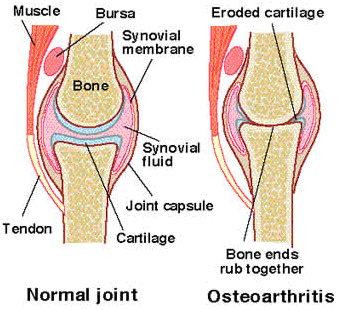 |
| Prevalence:The prevalence of osteoporosis in Malaysia was 24.1% in 2005, predominantly affecting the hip. | Prevalence:In 2008, there were approximately 60% of the Malaysia population suffered from arthritis by the age of 60 years old, and more than 20% were osteoarthritis. |
| Causes of osteoporosis:Elderly, menopause (women), drop in testosterone (men), being confined to bed, taking corticosteroids or antiseizures medications (prednisone, methylprednisolone), hyperparathyroidismand Vitamin D deficiency. | Causes of osteoarthritis:Being overweight, elderly, fractures or joint injuries and family history of osteoarthritis. |
| Signs and symptoms:Bone pain or tenderness.Bone fractureswith little or no trauma.Loss of height (as much as 6 inches) over time. |
Low back pain due to fractures of the spinal bones.
Neck pain due to fractures of the spinal bones.
Stooped posture or kyphosis, also called a “dowager’s hump”.Signs and symptoms: Pain, swelling and stiffness at affected joints (hip, knee, foot, hand).Tests and diagnosis:Bone Mineral Density test, BMD (specifically densitometry or DEXA scan.) BMD is a method of measuring bone calcium content and helps in detecting early loss of bone mass. Tests and diagnosis:Physical examination (limited joint movement, joint swelling).X-rays of the affected joint.Arthroscopy (a surgical technique whereby a doctor inserts a viewing tube into the joint space.)
Tests and diagnosis:Physical examination (limited joint movement, joint swelling).X-rays of the affected joint.Arthroscopy (a surgical technique whereby a doctor inserts a viewing tube into the joint space.)
Arthrocentesis (a sterile needle is used to remove joint fluid for analysis.)
Preventing Osteoporosis and Osteoarthritis:
Osteoporosis and osteoarthritis prevention should begin in childhood, with healthy diet and regular exercise to maintain healthy weight and stronger bones.
Weight-bearing / resistant exercise
 It helps to strengthen the bones, improve body posture, balance and co-ordination. Weight-bearing exercises are brisk walking, jogging, swimming and dancing. Resistant exercises are push-ups, weight lifting and yoga.
It helps to strengthen the bones, improve body posture, balance and co-ordination. Weight-bearing exercises are brisk walking, jogging, swimming and dancing. Resistant exercises are push-ups, weight lifting and yoga.
Loss extra weight (if overweight or obese)
Losing extra weight could help in reducing the pressure at joints and bones. 
Increase calcium intake
Calcium is the building block of bone. A sustained high calcium intake in children and adolescents is associated with higher peak bone mass, hence reducing risk of osteoporosis occurring in later life.
Foods: Refer to the calcium table below (page5).10-18 years old: 100mg*
19-50 years old: 800mg*
Women after menopause or over 65 years old: 1000mg*
Adequate vitamin D intake
 Vitamin D is as important as calcium because the body need this to increase the absorption of calcium. The main source of Vitamin D is from sunlight. Exposure of sunlight 15 minutes (early morning/ evening) per day is important to achieve adequate vitamin D.
Vitamin D is as important as calcium because the body need this to increase the absorption of calcium. The main source of Vitamin D is from sunlight. Exposure of sunlight 15 minutes (early morning/ evening) per day is important to achieve adequate vitamin D.
Foods: fortified milk, margarine, oily fish, egg yolks, and fortified soy beverages.All ages: 200 IU / 5µg*
Adequate vitamin K intake
 New research suggests people who consume the most vitamin K have a lower risk of hip fractures than those who consume less. Friendly bacteria (Probiotic) that lives in your intestines help to produce vitamin K.
New research suggests people who consume the most vitamin K have a lower risk of hip fractures than those who consume less. Friendly bacteria (Probiotic) that lives in your intestines help to produce vitamin K.
Foods: leafy green vegetables, green peas, broccoli, spinach, cabbage, egg yolks, fortified dairy products, plant oils (canola, soybean, olive).
Consume plenty of soy
 Soy bean contains isoflavones, which is a type of plant estrogen that may help to conserve bone mass, particularly for women during perimenopause and menopause.
Soy bean contains isoflavones, which is a type of plant estrogen that may help to conserve bone mass, particularly for women during perimenopause and menopause.
Foods: Soy beans, soy milk, tofu, soy powder, tempeh.2 -3 servings per day
* Values are based on Recommended Nutrient Intakes for Malaysia 2005. All RNIs are for daily intakes.
Foods to avoid
- Caffeine

Excessive consumption of coffee, teas or colas increases the calcium excretion through urine. Limit to 2 cups per day of coffee, teas or colas. - Alcohol

Alcoholic drinks in excessive amount reduce bone formation and reduce calcium absorption.
Limit to not more than 2 standard drinks of alcoholic drinks per day. - Smoking

Smoking causes bone loss and early menopause in women. - Phytates

Phytic acid (phytate) is phosphorus – containing compound found principally in the outer husks of cereal grains. It combines with calcium to form calcium phytate, which is insoluble and cannot be absorbed into the body.
Calcium content of common foods in Malaysia
Zoom in to read the full news article
“Ask your doctor to give you a bone mineral density test if you think you are at risk for developing osteoporosis.”
“Talk with your doctor about estrogen replacement therapy and other drugs that may help to prevent osteoporosis.”
“Eat a diet high in calcium and vitamin D. Some good foods are dark green leafy vegetables, broccoli, sardines, salmon, kelp, oysters and dairy products.”
“Take calcium and vitamin D supplements. Vitamin D encourages calcium absorption.”
“Exercise daily if possible. Weight-bearing exercises like running, walking and lifting weights are best for bone health.”
“Limit foods that deplete or prevent proper absorption of calcium: caffeine, soft drinks (or anything else containing phosphorus), or excessive amount of protein or wheat bran eating along with calcium-rich food.”
“Some studies have shown that female vegetarians have significantly less bone loss that those who eat meat.”
“ Try taking calcium carbonate antacids. They are easily absorbed and contain plenty of elemental calcium.”
“ Check your medication. Some should not be taken with calcium and vitamin D supplements.”
Source: The Star, 20th October 2011
Understanding Carbohydrates
Carbohydrates are the body’s main source of fuel. Carbohydrates are broken down by the digestive system into glucose (blood sugar), because cells are designed to use this as a universal energy source.
Low fiber carbohydrates
Low fiber carbohydrates such as sweets, white bread, rice, milk and dairy products are easily digested.
Over consumption of carbohydrates or high consumption of low fiber carbohydrates contribute to weight gain  and abnormal blood lipids.
and abnormal blood lipids.
High fiber carbohydrates
High fiber carbohydrates such as wholegrain, legumes, beans, fruits and vegetables add more values to our health than just calories. There are soluble and insoluble fibers. Soluble fiber binds to fatty substances in the intestines and  carries them out as a waste, thus lowering lowdensity lipoprotein (LDL, or bad cholesterol). It also helps to regulate the body’s use of sugars, thus helps in blood sugar control. Insoluble fiber helps to push food through the intestinal tract, thus prevents constipation.
carries them out as a waste, thus lowering lowdensity lipoprotein (LDL, or bad cholesterol). It also helps to regulate the body’s use of sugars, thus helps in blood sugar control. Insoluble fiber helps to push food through the intestinal tract, thus prevents constipation.
Caloric Sweeteners
Caloric sweeteners provide calories, impact blood glucose levels and may promote cavities. Sugars such as white sugar, brown sugar, cane sugar, powdered sugar, table sugar and raw sugar are one type of caloric sweetener. Other common caloric sweeteners are tabled below.
Sugar Alcohols
Sugar alcohols are carbohydrates. They convert to glucose, and provide calories. Sugar alcohols may cause gastrointestinal discomforts such as flatulence (gas), cramping, and diarrhea. Products may be labeled sugar-free or no sugar added because sugar alcohols are not technically sugar.
– sorbitol
– xylitol
– erythritol
– isomalt
– mannitol
– lactitol
– maltitol
– hydrogenated starch hydrolysates
Read Food Label to Count Carbohydrates and Sugar
When it comes to a processed food, reading food label in the ONLY way to find out the amount of carbohydrate and/or sugar it contains. Each 1g of carbohydrate contains 4 kcal of energy.
 Food Label Definitions
Food Label Definitions
1) No Sugar Added – No sugar added during food processing but may still have natural food sugars
2) Reduced Sugar – The sugar content of the food has been reduced by at least 25%
3) Sugar-free – Less than half a gram of sugar per serving
4 Recommended Steps for Healthier Carbohydrate Consumption
Step 1
 Fill half of your plate with non-starchy vegetables either raw or cooked. Non-starchy vegetables are low in calories and carbohydrate, while high in fiber. This can help you feel full and more satisfied with your meal, but not lead to weight gain and high blood sugar. Examples are bamboo shoots, sprouts, cabbages, carrots, cauliflower, cucumber, eggplant, leeks, onions, mushrooms, radishes, squash, tomatoes, long beans and lady’s fingers.
Fill half of your plate with non-starchy vegetables either raw or cooked. Non-starchy vegetables are low in calories and carbohydrate, while high in fiber. This can help you feel full and more satisfied with your meal, but not lead to weight gain and high blood sugar. Examples are bamboo shoots, sprouts, cabbages, carrots, cauliflower, cucumber, eggplant, leeks, onions, mushrooms, radishes, squash, tomatoes, long beans and lady’s fingers.
 Step 2
Step 2
Limit protein to a quarter of your plate. If you choose lean meat, poultry, or fish; the portion is about the palm of your hand. If you choose tofu, nuts, or seeds; the portion is about 2 tbsp of nuts/seeds or 1/2 cup of tofu.
Step 3
Limit starch to a quarter of your plate.
 If you choose rice, grains, pasta, cereal, or a starchy vegetable, limit the portion to no more than 1 cup – this is about the size of a woman’s fist. Starchy vegetables include beans, potatoes, corn, yams, peas, and winter squash.
If you choose rice, grains, pasta, cereal, or a starchy vegetable, limit the portion to no more than 1 cup – this is about the size of a woman’s fist. Starchy vegetables include beans, potatoes, corn, yams, peas, and winter squash.- If you choose bread, limit to 2 slices or 1/2 bagel.
- If you choose a hamburger/hotdog bun, limit to 1 bun.
- If you choose a tortilla, limit to 2 small tortillas or 1 large tortilla.
Include starches from whole grains, such as whole wheat bread or tortillas, brown rice, whole wheat pasta, whole grain and bran cereals, or beans DAILY.
Step 4
Add 1 portion of fruit to your meal. 1 portion of fruit is:
- 1 medium orange/apple/pear/peach/custardaapple/starfruit/persimmon/sapodilla/kiwi
- 2 small mangosteen/plum
- 5 whole lychee/rambutan
- A slice of papaya/pineapple/watermelon/soursop
- 5 slices of pomelo
- ½ guava
- 4 pieces of jackfruit
- 3 pieces of prunes
- 2 pieces of dried dates
- 1 tablespoon of raisin
- 2 seeds of durian
- an half small mango
- 1 small banana.

Fruit juice is high in fructose (fruit sugar) so it can cause blood sugar levels to rise quickly (Food Standard Agency of UK: www. food.gov.uk). Overall, eating fruit provides more benefits than just consuming the juice.
How Much Sugar, by Consumer Association of Penang
Compiled from posters available at: http://www.consumer.org.my/index.php/homepage/slideshow/437-sugar
Malaysians consume 26 teaspoons of sugar daily,
We are the 8th highest sugar user in the world!
Special Topic : Impact of Mobile Phones on Human Health
Mobile phones are now an integral part of modern telecommunications. At the end of 2009, there were an estimated 4.6 billion subscriptions globally. Given the large number of mobile phone users, it is important to investigate, understand and monitor any potential public health impact. Mobile phones communicate by transmitting radio waves through a network of fixed antennas called base stations. Radiofrequency waves are electromagnetic fields. Unlike ionizing radiation such as X-rays or gamma rays, radiofrequency wave cannot break chemical bonds nor cause ionization in the human body.

The higher your hand phone’s SAR, the more radio waves you absorb.
How high is the body exposure to radio frequency from mobile phones and wireless devices?
- When exposed to radio frequency fields, the body absorbs energy over time.
- The energy absorption rate is known as the Specific Absorption Rate (SAR)
- SAR varies throughout the body.
- The European Union set radio frequency safety limit at SAR of 2000 mW per kg of tissue.
- On average, a six-minute conversation with mobile phone held to the head and operating at maximum power; SAR of the body tissue that absorb most energy is 200-1500 mW per kg of tissue, depending on the type of phone.
- Other wireless devices like cordless phones and wireless networks also generate radio waves but exposure from these sources is usually lower than from mobile phones.
Studies and Reported Effects
- Health Physics: June 2007 – Volume 92 – Issue 6 – pp 609-620 Thermal Mechanisms of Interaction of Radiofrequency Energy with Biological Systems with Relevance to Exposure Guidelines
Focus
Thermal mechanisms of interaction between radiofrequency (RF) fields and biological systems, focusing on theoretical frameworks that are of potential use in setting guidelines for human exposure to RF energy.
Reported
Nonthermal effects of RF energy may be thermal in nature; also that subtle thermal effects from RF energy exist but have no consequence to health or safety.
- Journal of the American Medical Association: 2011. How brain reacts to electromagnetic fields caused by wireless phone signals, by National Institute of Health
Focus
Purpose of study was to show the human brain is sensitive to electromagnetic radiation from cellphone exposures.Reported
Spending 50 minutes with a cellphone plastered to your ear is enough to change brain cell activity in the part of the brain closest to the antenna. But whether that causes any harm is not clear
- Thamir Al-Khlaiwi, Sultan A. Meo Association of mobile phone radiation with fatigue, headache, dizziness, tension and sleep disturbance in Saudi population. Saudi Medical Journal 2004; Vol. 25 (6): 732-736 http://www.smj.org.sa/DetailArticle.asp?ArticleId=1887Focus
The aim of the study is to investigate the association of using mobile phones with fatigue, headache, dizziness, tension and sleep disturbance in the Saudi population and provide health and social awareness in using these devices.Reported
The results of the present study showed an association between the use of mobile phones and health hazards. The overall mean percentage for these clinical findings in all groups were headache (21.6%), sleep disturbance (4%), tension (3.9%), fatigue (3%) and dizziness (2.4%).
Facts and Preventions Tips
More scientific studies are the only ways we have to answer all the mobile phone health doubts. Until then, it’d be good for the users to practice preventive tips against speculated hazards.
|
Speculated…
|
Prevention tips |
|
The handset only transmits power (radiofrequency exposure)whenit’s turned on. |
Turn off your handset at night. |
|
The radiofrequency exposure to a user falls off rapidly with increasing distance from the handset. |
Using a mobile phone 30–40 cm for text messaging, accessing the Internet, or using a “hands free” device are preferred than holding the handset against head. |
|
The radiofrequency is also reduced by limiting the number and length of calls. |
Cell phones should be used for emergencies, and not for long conversations. |
|
Using the phone in areas of good reception also decreases exposure as it allows the phone to transmit at reduced power. Fewer signal bars on your phone means that it emits more radiation to get the signal to the tower. |
Make and take calls when your phone has a strong signal. Avoid use phone in the place that with low signal, eg. In the lift or tunnel. |
|
Radiofrequency signals may interfere with certain electro-medical devices and navigation systems. |
Do not use mobile phones in hospitals and on airplanes.
|
|
Because of their smaller heads, thinner skulls and higher tissue conductivity, children may absorb more energy from a given phone than adults. |
Using a mobile headset is a good idea, they don’t have to hold phones next to their ears all the time. |
|
Research has clearly shown an increased risk of road traffic injuries when drivers use mobile phone. |
Use a hands free mobile car kit while driving, without taking your hands off the steering wheel. |
Article courtesy of Golden Horses Health Sanctuary’s Library of Life
Download this article here.
April Topic : Liver Related Abnormalities
Topic of the Week : Liver Cancer
The liver is the largest organ inside our abdomen. It is found behind the ribs on the right side of our body. The liver does
important work to keep us healthy including:
a) It removes harmful substances from the blood.
b) It makes enzymes and bile that help digest food.
c) It also converts food into substances needed for life and growth.
Cancer begins in cells, the building blocks that make up tissues. Tissues make up the organs of the body. The buildup of extra cells often forms a mass of tissue called a growth, nodule, or tumor. Growths in the liver can be benign (not cancer) or malignant (cancer).
Liver cancer is the third most common cancer in the world, and the majority of patients with liver
cancer will die within one year as a result of the cancer.
In Malaysia:
- 70% of liver cancer was happen among male while 30% was among female.
- Chinese is the majority races, and followed by Malays and Indian.
In GHHS:
- Detected liver related abnormalities increasing from year 2008 to 2010.
- Example of liver related abnormalities are tumor, cirrhosis, hepatitis and fatty liver.
Risk Factors of Liver Cancer
- HEPATITIS B INFECTION
Transmitted from contaminated blood products, used needles, sexual contact, and contamination at birth (from mother to baby).
- HEPATITIS C INFECTION
Transmitted from contaminated blood products and used needles. The average time to develop liver cancer after exposure to hepatitis C virus was about 28 years.
- ALCOHOL
Active drinkers are more likely to die from non-cancer liver complications.
- AFLATOXIN B1 (MOLD)
Found in food that stored in a hot and humid environment such as peanuts, rice, soybeans, corn, wheat & etc.
- DRUGS & MEDICATIONS
Prolong medication is harmful to our liver. Medication such as antiviral drugs (for AIDS, antibiotic) and Protein-building anabolic steroids.
- CHEMICALS
Long term exposure of Vinyl Chloride which normally found in plastic industry. Food preservative that found in meat, noodles, pickles, snack & etc.
- DIABETES & OBESITY
Accumulation of fat within the liver.
- CIRRHOSIS (HARDENING OF LIVER)
Risk factors of cirrhosis are Hepatitis B, Hepatitis C and alcohol consumption.
Sign and Symptoms
There are no specific symptoms of liver cancer, and in fact, the earliest signs are usually subtle and can be mistaken for simple worsening of cirrhosis and liver function. However, there are some common initial presentations can be seen from physical outlook among liver cancer patients, such as ascites, jaundice and muscle wasting.
By referring to the risk factors above, we can conclude that liver cancer should be an almost totally PREVENTABLE disease.
1. Vaccination – Risk of hepatitis B infection can be reduced by receiving vaccination of hepatitis B, which provides more than 90% protection for both adults and children. However, there is no any vaccination for hepatitis C is available.
2. Safe sex – Know the health status of sexual partner and do not ever engage with unprotected sex unless you are absolutely certain your sex partner do not have any sexual transmitted disease such as hepatitis B and hepatitis C that might link to liver cancer.
3. Do not share needle – Use sterile and clean needle in any injected activity. All the needles are for one times use only. Contaminated drug paraphernalia is a common cause of hepatitis C infection.
4. Avoid alcohol abuse – Limit consumption to not more than two drinks a day for men and not more than one drink per day for women. A drink is defined as 5 oz of wine, 12 oz of beer or 1 ½ oz of 80-proof whiskey.
5. Healthy and balanced diet – Healthy and balanced diet is always a key method on diseases prevention including liver cancer.
6. Regular exercise – Exercise at least 150 minutes a week can reduce the risk of most cancer including liver cancer.
7. Maintain healthy body weight – Reduce body weight for those who are overweight or obesity and maintain within BMI 18.5-22.9kgm-2.
8. Regular health screening – Regular health screening may help to monitor liver’s health status and detect any abnormalities in the early stage.
How Liver Function Test Reflect Your Liver’s Health?
Alanine transaminase (ALT) – An enzyme that mainly found in liver cells which help in metabolize protein. When the liver is damaged, ALT is released in the bloodstream and levels increase.
Aspartate transaminase (AST) – An enzyme which is plays a role in the metabolism of alanine. An increase in AST levels may indicate liver damage or disease.
Alkaline phosphatase (ALP) – An enzyme that mainly found in the liver and bile ducts. Higher than normal levels of ALP may indicate liver damage or disease.
Albumin and total protein – Albumin is a protein made by the liver while total protein shows how well is the liver in making proteins that needs to fight infections and perform other functions. Lower than normal levels may indicate liver damage or disease.
Bilirubin – Bilirubin results from the breakdown of red blood cells. Normally, bilirubin passes through the liver and is excreted in our stool. Elevated levels of bilirubin (jaundice) may indicate liver damage or disease.
Health Tips
Selected foods which are good in maintaining liver’s health.
- Garlic and Onion
– Rich in allicin, a sulfur-based compound that needed by liver for effective detoxification.
– May help the liver to rid the mercury, certain food additives and the hormone estrogen.
- Cruciferous vegetables (broccoli, Brussel sprouts, cauliflower, cabbage)
– Contain chemicals that may neutralize certain toxins such as nitrosamines found in cigarette smoke and aflotoxin found in
peanuts.
– Contain glucosinolates that help the liver to produce enzymes it needs for its detoxification processes.
- Lemon
– Drinking freshly squeezed lemon juice in a cup of boiled water first thing in the morning helps to cleanse the liver and promote
detoxification.
– It also stimulates bile production, cleanses the stomach and bowel and stimulates a bowel motion.
- Beetroot (Beets)
– It may act as a blood-purifying tonic that capable of absorbing heavy metals.
- Apples
– Contain pectin that bind to heavy metals in the body (in particular in the colon) and help their excretion. This may reduces the load on the liver and its detoxification capacities.
- Artichoke
– May increases bile production. (One of the functions of bile is to remove toxins through the bowel, as well as ‘unfriendly’ microorganisms.)
– It has been suggested that 30 minutes after eating globe artichoke,
bile flow is increased by over 100%.
- Bitter leafy salad greens (dandelion, chicory, endive, rocket).
– The bitterness of these foods may help to stimulate bile flow within
the liver.
Article courtesy of Golden Horses Health Sanctuary’s Library of Life
Download this article here.
March Topic : Food Handling
Topic of the Week : Basics for Handling Food Safely & Alternative Medicine Treatment
Safe steps in food handling, cooking, and storage are essential to prevent food borne illness. You can’t see, smell, or taste harmful bacteria that may cause illness. Take preventive steps in every food handling stage to keep food safe.
Shopping
1. Get refrigerated or frozen items after selecting your non-perishables.
2. Never choose meat or poultry in packaging that is torn or leaking.
3. Do not buy food past “Sell-By,” “Use-By,” or other expiration dates.
Storage
1. Always refrigerate perishable food within 2 hours (1 hour when the temperature is above 90 °F).
2. The refrigerator should be at 40 °F or below and the freezer at 0 °F or below.
3. When freezing meat and poultry in its original package, wrap the package again with foil or plastic wrap to maintain quality and to prevent meat juices from getting onto other food.
4. Discard cans that are dented, leaking, bulging, or rusted.
Preparation
1. Always wash hands with warm water and soap for 20 seconds before and after handling food.
2. Don’t cross-contaminate. Keep raw meat, poultry, fish, and their juices away from other food.
3. After cutting raw meats, wash cutting board, utensils, and countertops with hot, soapy water or sanitize them in a solution of 1 tablespoon of unscented, liquid chlorine bleach in 1 gallon (about 4 litres) of water.
4. Marinate meat and poultry in a covered dish in the refrigerator.
Defrosting/Thawing
1. Refrigerator: The refrigerator allows slow, safe thawing. Make sure thawing meat and poultry juices do not drip onto other food.
2. Cold Water: For faster thawing, place food in a leak-proof plastic bag. Submerge in cold tap water. Change the water every 30 minutes. Cook immediately after thawing.
3. Microwave: Cook meat and poultry immediately after microwave thawing.
Cooking
1. Beef, veal, and lamb steaks, roasts, and chops may be cooked to 145 °F.
2. All cuts of pork, 160 °F.
3. Ground beef, veal and lamb to 160 °F.
4. All poultry should reach a minimum internal temperature of 165 °F.
Serving
1. When serving food at a buffet, keep food hot with chafing dishes, slow cookers, and warming trays. Keep food cold by nesting dishes in bowls of ice or use small serving trays and replace them often.
2. Perishable food should not be left out more than 2 hours at room temperature (1 hour when the temperature is above 90 °F).
Leftovers
1. Discard any food left out at room temperature for more than 2 hours (1 hour if the temperature was above 90 °F).
2. Place food into shallow containers and immediately put in the refrigerator or freezer for rapid cooling.
3. Use cooked leftovers within 4 days.
Refreezing
1. Meat and poultry defrosted in the refrigerator may be refrozen before or after cooking.
2. If thawed by other methods, cook before refreezing.
Cold Storage Chart
These short, but safe, time limits will help keep refrigerated food from spoiling or becoming
dangerous to eat. Recommended storage times are for quality only.
|
Product |
Refrigerator (40 °F) |
Freezer (0 °F) |
|
Eggs |
||
|
Fresh, in shell |
3 to 5 weeks |
Do not freeze |
|
Raw yolks & whites |
2 to 4 days |
1 year |
|
Hard cooked |
1 week |
Does not freeze well |
|
Liquid pasteurized eggs, egg substitutes |
||
|
Opened |
3 days |
Does not freeze well |
|
Unopened |
10 days |
1 year |
|
Mayonnaise, Commercial |
||
|
Refrigerate after opening |
2 months |
Do not freeze |
|
Frozen Dinners & Entrees |
||
|
Keep frozen until ready to heat |
— |
3 to 4 months |
|
Deli & Vacuum-Packed Products |
||
|
Store-prepared/homemade egg, chicken, ham, tuna, & macaroni salads |
3 to 5 days |
Does not freeze well |
|
Fresh Beef, Veal, Lamb, Pork |
||
|
Steaks |
3 to 5 days |
6 to 12 months |
|
Chops |
3 to 5 days |
4 to 6 months |
|
Roasts |
3 to 5 days |
4 to 12 months |
|
Variety meats — tongue, liver, heart, kidneys, chitterlings |
1 to 2 days |
3 to 4 months |
|
Pre-stuffed, uncooked pork chops, lamb chops, or chicken breasts stuffed with dressing |
1 day |
Does not freeze well |
|
Soups & Stews, vegetable or meat added |
3 to 4 days |
2 to 3 months |
|
Fresh Poultry |
||
|
Whole |
1 to 2 days |
1 year |
|
Chicken or turkey, pieces |
1 to 2 days |
9 months |
|
Giblets |
1 to 2 days |
3 to 4 months |
|
Hot dog, Luncheon, Bacon |
||
|
Hot dog, opened package |
1 week |
1 to 2 months |
|
Hot dog, unopened package |
2 weeks |
1 to 2 months |
|
Luncheon meat, opened package |
3 to 5 days |
1 to 2 months |
|
Luncheon meat, unopened package |
2 weeks |
1 to 2 months |
|
Bacon |
7 days |
1 month |
|
Product |
Refrigerator (40 °F) |
Freezer (0 °F) |
|
Sausage and Corned Meat |
||
|
Sausage, raw — from chicken, turkey, pork, beef |
1 to 2 days |
1 to 2 months |
|
Smoked breakfast links, patties |
7 days |
1 to 2 months |
|
Hard sausage — pepperoni, jerky sticks |
2 to 3 weeks |
1 to 2 months |
|
Summer sausage labeled “Keep Refrigerated”, Opened |
3 weeks |
1 to 2 months |
|
Summer sausage labeled “Keep Refrigerated”, Unopened |
3 months |
1 to 2 months |
|
Corned beef, in pouch with pickling juices |
5 to 7 days |
Drained, 1 month |
|
Ham and Ground Meat |
||
|
Ham, canned, labeled “Keep Refrigerated”, Opened |
3 to 5 days |
1 to 2 months |
|
Ham, canned, labeled “Keep Refrigerated”, Unopened |
6 to 9 months |
Do not freeze |
|
Ham, fully cooked , Vacuum sealed at plant, undated, unopened |
2 weeks |
1 to 2 months |
|
Ham, fully cooked , Vacuum sealed at plant, dated, unopened |
“Use-By” date |
1 to 2 months |
|
Ham, fully cooked , Whole |
7 days |
1 to 2 months |
|
Ham, fully cooked , Half |
3 to 5 days |
1 to 2 months |
|
Ham, fully cooked , Slices |
3 to 4 days |
1 to 2 months |
|
Hamburger & stew meat |
1 to 2 days |
3 to 4 months |
|
Ground turkey, veal, pork, lamb, & mixtures of them |
1 to 2 days |
3 to 4 months |
|
Cooked Meat and Poultry Leftovers |
||
|
Cooked meat & meat casseroles |
3 to 4 days |
2 to 3 months |
|
Gravy & meat broth |
1 to 2 days |
2 to 3 months |
|
Fried chicken |
3 to 4 days |
4 months |
|
Cooked poultry casseroles |
3 to 4 days |
4 to 6 months |
|
Poultry pieces, plain |
3 to 4 days |
4 months |
|
Poultry pieces in broth, gravy |
1 to 2 days |
6 months |
|
Chicken nuggets, patties |
1 to 2 days |
1 to 3 months |
|
Other Cooked Leftovers |
||
|
Pizza, cooked |
3 to 4 days |
1 to 2 months |
|
Stuffing, cooked |
3 to 4 days |
1 month |
Article courtesy of Golden Horses Health Sanctuary’s Library of Life
Download this article here.
Topic of the Week : Safe Food Handling and Food Borne Diseases
Food borne diseases are a widespread and growing public health problem, both in developed and developing countries. Food borne diseases are usually either infectious or toxic in nature, caused by agents that enter the body through the ingestion of food. Every person is at risk of food borne diseases.
Thousands of types of bacteria are naturally present in our environment. Not all bacteria cause disease in humans. For example, some bacteria are used beneficially in making cheese and yogurt. Bacteria that cause disease are called pathogens.
- Prevalence
The global incidence of food borne disease is difficult to estimate, but it has been reported that in 2005 alone 1.8 million people died from diarrhea diseases. A great proportion of these cases can be attributed to contamination of food and drinking water.
Despite many actions taken by government or private sectors to improve sanitation and hygiene, however, incidence rate of cholera, dysentery, typhoid and Hepatitis A are in increasing mode in Malaysia, as compared between Health Facts 2008 and 2009.
- Common pathogens that lead to food borne diseases
| Pathogens | Food Source |
| Salmonella | Raw and undercooked eggs, undercooked poultry and meat, dairy products, seafood, fruits and vegetables. |
| Campylobacter | Raw and undercooked meat and poultry, raw milk and untreated water. |
| Escherichia coli | Raw or undercooked meat and raw milk. |
| Cholera | Untreated water |
- Common symptoms of food borne diseases:
– Diarrhea
– Vomiting
– Nausea
– Abdominal cramps
– Fever
– Joint/back aches
– Fatigue
- How will I know if my symptoms are a result of food borne illness?
It can be difficult to know if your symptoms are due to food borne illness or to another cause. Some of the foods borne symptoms are headache, fever and vomiting, which can be attributed to the flu or other illnesses. A healthcare practitioner may be able to determine the cause of your symptoms.
In all cases of illness, regardless of the cause, it is important to seek immediate medical attention when food borne symptoms are severe.
- Four Easy Steps of Safe Food Handling
1. Wash hands and surfaces often
Hands need to be washed under running water for 20 seconds after and before touching foods.
2. Separate: Don’t cross-contaminate
Use a different cutting board for raw meats, salads and ready to eat foods. Cross-contamination occurs when meats, poultry and seafood come in contact with ready to eat foods or foods that do not required cooking.
3. Cook to proper temperatures
Make sure foods are thoroughly cooked (no cool spots) and use a meat thermometer to measure internal temperature.
4. Chill-Refrigerate promptly
The danger zone for rapid growth of bacteria is between 40 – 120. Most of harmful bacteria do not multiply at temperature below than 40
- Storage tips for eggs
The best way to store eggs is to keep them in their own carton in the fridge. Egg shells are porous and can become tainted by strong-smelling foods in your fridge.
Keeping them in the carton makes this less likely to happen. Don’t wash eggs as the shell becomes more porous when wet, making it easier for bacteria to get in.
- 2-hour Rule
Refrigerate or freeze perishables, prepared food and leftovers within 2 hours to avoid bacteria grow to unsafe level. Do not leave them sitting out at room temperature.
- Storage tips for potatoes
Store raw potatoes in a dark place. Potatoes exposed to light will produce solanine, which turns potatoes into green colour. Cut away and discard any green spots before cooking because solanine tastes bitter and can also cause indigestion if eaten in large amounts.
Store potatoes separately. Do not store potatoes with apples, pears, bananas, or onions. These vegetables will cause potatoes to spoil more quickly and may also transfer flavors.
Everyone Plays a Role in Food Safety
Food contamination can occur at any stage from farm to table. Everyone on the food delivery chain must employ measures to keep food safe – farmer, processor, vendor and consumer. Safety at home is just as vital to prevent disease outbreaks. Women are primary targets for food safety education as they are responsible for household meals in many societies.
Article courtesy of Golden Horses Health Sanctuary’s Library of Life.
Download this article here.
February Topic : Heart Alarm
Topic of the Week : Knowing Preventable Risk Factors of Heart Disease
Heart disease is the first principal cause of death in Malaysia, in the year of 2009, as published in Health Fact 2009 by Ministry of Health Malaysia. Heart disease risk factors are grouped into two, they are:
1. Risk Factors That Can Be Changed
You can treat, modify or change them by:
- A for Avoiding Tobacco
- B for Being More Active
- C for Choosing Good Nutrition
2. Risk Factors That Can’t Be Changed
Since you can’t do anything about these risk factors, it’s even more important for you to manage the risk factors that can be changed.
- Age
- Gender
- Family History & Race
8 Preventive Steps You Can Take Against Heart Disease
Step 1: Stop smoking.
If you smoke, quit. If someone in your household smokes, encourage them to quit. We know it’s tough. But it’s tougher to recover from a heart attack or stroke or to live with chronic heart disease.
Step 2: Lower high blood pressure.
It’s the single largest risk factor for stroke. Stroke recovery is difficult and you could be disabled for life. Shake that salt habit, take any medication the doctor recommends exactly as prescribed and get moving.
Step 3: Reduce blood cholesterol.
Fat lodged in your arteries could trigger a heart attack or stroke. Reduce intake of saturated and trans fat and get moving. If diet and exercise alone don’t get those numbers down, then medication is the key.
Step 4: Ensure no harmful intake of alcohol
NOT to start drinking … if you do not drink alcohol. If you drink alcohol, drink in moderation. Drinking too much alcohol can raise blood pressure, cause heart failure and lead to stroke.
Step 5: Target, achieve and maintain a healthy weight
Excessive body weight is associated with increased risk for heart disease. Fad diets and supplements are not the answer. Good nutrition and physical activity are the only way to maintain a healthy weight.
Step 6: Live with healthy blood sugar level
Cardiovascular disease is the leading cause of diabetes-related death. People with diabetes are two to four times more likely to develop cardiovascular disease.
Step 7: Manage your stress
Reduce stress in your life, if you don’t feel that’s possible then find healthy ways to deal with stress like exercise and deep breathing.
Step 8: Be physically active every day.
Experts recommend 30-60 minutes of exercise each day, but something IS better than nothing, so if you aren’t exercising start out slow and make it a habit.
Heart Alarm: Health Statistics
Health Facts 2009 by Ministry of Health, Malaysia
10 Principal Causes of Deaths in MOH Hospitals, Malaysia in 2009 [Percentage (%)]
- Heart Disease and Diseases of Pulmonary Circulation [16.09]
- Septicaemia [13.82]
- Malignant Neoplasm [10.85]
- Pneumonia [10.35]
- Cerebrovascular Diseases (Stroke) [8.43]
- Diseases of Digestive System [4.98]
- Accidents [4.85]
- Certain Conditions Originating in The Perinatal Period [3.82]
- Nephritis. Nephrotic Syndrome and Nephrosis [3.58]
- Chronic Lower Respiratory Disease [2.03]
(Source: Ministry of Health, Malaysia)
Have you checked your hs-CRP?
Get your hs-CRP checked in our screening centre today!
What is hs-CRP?
C-reactive protein (CRP) is one of the acute phase proteins that increase during systemic inflammation. It’s been suggested that testing CRP levels in the blood may be an additional way to assess cardiovascular disease risk. A more sensitive CRP test, called
a highly sensitive C-reactive protein (hs-CRP) assay, is available to determine heart disease risk.
How does inflammation relate to heart disease and stroke risk?
Laboratory evidence and findings from clinical and population studies suggest that inflammation is important in atherosclerosis. This is the process in which fatty deposits build up in the inner lining of arteries.
What is the normal range of hs-CRP level?
- If hs-CRP level is lower than 1.0 mg/L, a person has a low risk of developing cardiovascular disease.
- If hs-CRP is between 1.0 and 3.0 mg/L, a person has an average risk.
- If hs-CRP is higher than 3.0 mg/L, a person is at high risk.
Patients with autoimmune diseases or cancer, as well as other infectious diseases, may also have elevated CRP levels.
Article courtesy of Golden Horses Health Sanctuary’s Library of Life.
Download this article here.
|
1.
Wash hands and surfaces often. |
Hands need to be washed under running water for 20 seconds after and before touching foods.
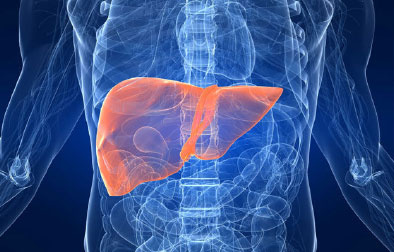
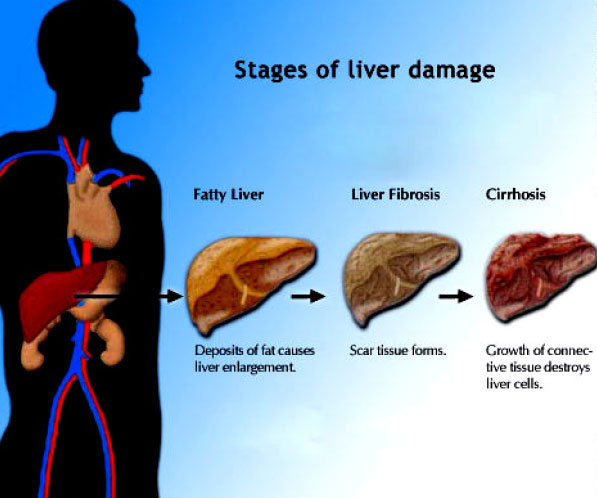


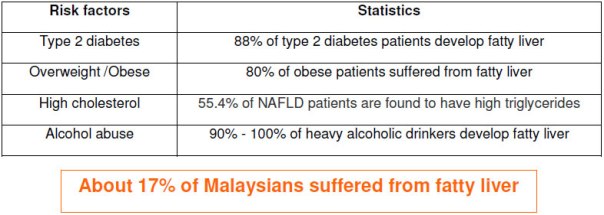
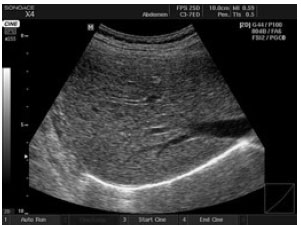
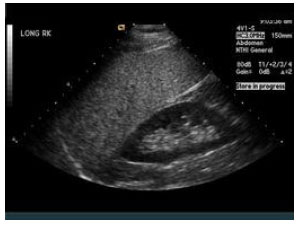
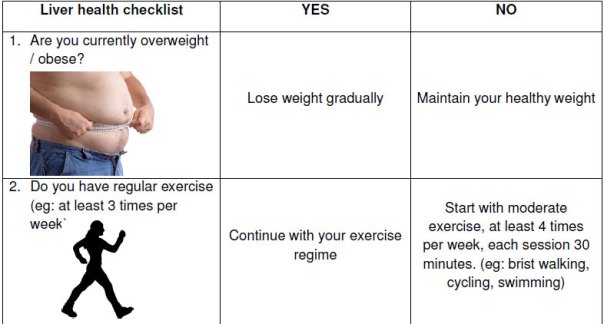
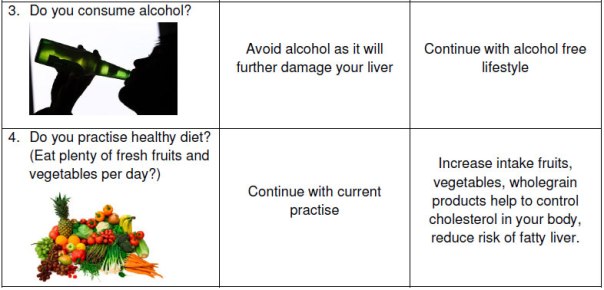

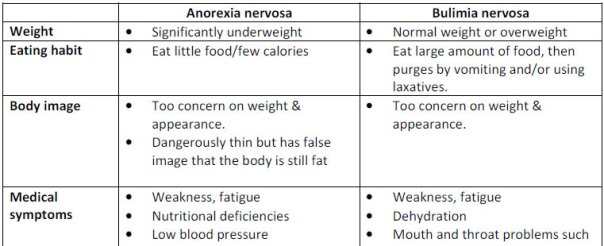
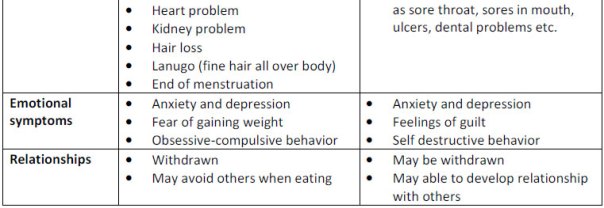

































There are some interesting deadlines in this article but I don’t know if I see all of them heart to heart. There is some validity however I’ll take hold opinion till I look into it further. Good article , thanks and we wish extra! Added to FeedBurner as effectively